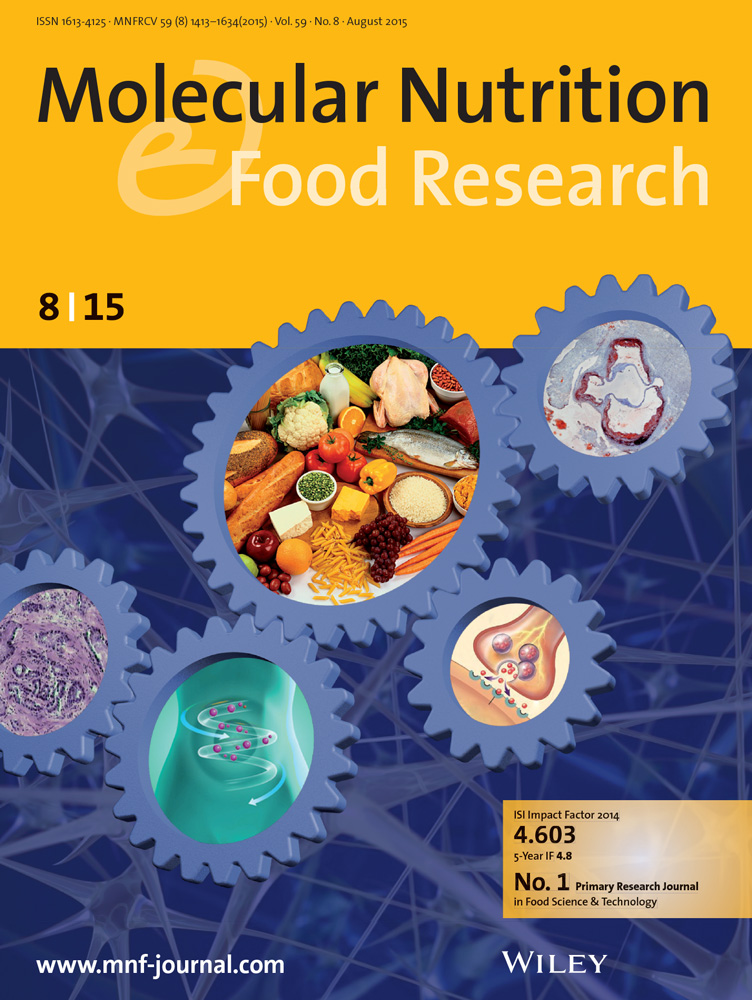TMAO Accumulation Induced by Hyperglycemia Triggers Endoplasmic Reticulum Stress in the Mouse Liver.
IF 4.2
2区 农林科学
Q1 FOOD SCIENCE & TECHNOLOGY
引用次数: 0
Abstract
Excessive carbohydrate intake is a well-established driver of metabolic dysfunction, but its specific role in perturbing hepatic endoplasmic reticulum (ER) homeostasis is not well defined. This study aimed to investigate how dietary carbohydrate levels and the microbial metabolite trimethylamine N-oxide (TMAO) influence hepatic ER stress. In vivo, normal C57BL/6J mice were fed a high-carbohydrate diet (HCD), whereas streptozotocin-induced diabetic mice received a carbohydrate-free ketogenic diet (NCD). In parallel, HepG2 and Huh7 cells were exposed to elevated glucose concentrations and/or TMAO in vitro. HCD feeding impaired glucose tolerance, promoted hepatic lipid accumulation, increased hepatic TMAO content, and elevated markers of FMO3 expression and ER stress (GRP78, p-IRE1). These alterations were reversed by NCD intervention in diabetic mice. In vitro, high glucose and TMAO each induced ER stress in a dose-dependent manner, with combined treatment further activating the IRE1-XBP1 branch and NLRP3 inflammasome signaling. TMAO also increased intracellular reactive oxygen species (ROS) and suppressed Nrf2-mediated antioxidant responses. These findings identify TMAO as a critical mediator linking hyperglycemia to hepatic ER stress and inflammation. Modulating dietary carbohydrate intake and targeting microbial TMAO synthesis may offer promising strategies for alleviating metabolic liver injury.高血糖诱导的氧化三甲胺积累触发小鼠肝脏内质网应激。
过量的碳水化合物摄入是代谢功能障碍的一个公认的驱动因素,但其在扰乱肝内质网(ER)稳态中的具体作用尚未明确。本研究旨在探讨膳食碳水化合物水平和微生物代谢物三甲胺n -氧化物(TMAO)对肝脏内质网应激的影响。在体内,正常C57BL/6J小鼠被喂食高碳水化合物饮食(HCD),而链脲霉素诱导的糖尿病小鼠被喂食无碳水化合物生酮饮食(NCD)。同时,HepG2和Huh7细胞在体外暴露于升高的葡萄糖浓度和/或TMAO。HCD喂养降低葡萄糖耐量,促进肝脏脂质积累,增加肝脏TMAO含量,升高FMO3表达和ER应激标志物(GRP78, p-IRE1)。这些改变被糖尿病小鼠的非传染性疾病干预逆转。在体外,高糖和TMAO均以剂量依赖的方式诱导内质网应激,联合治疗进一步激活IRE1-XBP1分支和NLRP3炎症小体信号。氧化三甲胺还能增加细胞内活性氧(ROS),抑制nrf2介导的抗氧化反应。这些发现表明氧化三甲胺是高血糖与肝脏内质网应激和炎症之间的重要中介。调节膳食碳水化合物摄入和靶向微生物氧化三甲胺合成可能为减轻代谢性肝损伤提供有希望的策略。
本文章由计算机程序翻译,如有差异,请以英文原文为准。
求助全文
约1分钟内获得全文
求助全文
来源期刊

Molecular Nutrition & Food Research
工程技术-食品科技
CiteScore
8.70
自引率
1.90%
发文量
250
审稿时长
1.7 months
期刊介绍:
Molecular Nutrition & Food Research is a primary research journal devoted to health, safety and all aspects of molecular nutrition such as nutritional biochemistry, nutrigenomics and metabolomics aiming to link the information arising from related disciplines:
Bioactivity: Nutritional and medical effects of food constituents including bioavailability and kinetics.
Immunology: Understanding the interactions of food and the immune system.
Microbiology: Food spoilage, food pathogens, chemical and physical approaches of fermented foods and novel microbial processes.
Chemistry: Isolation and analysis of bioactive food ingredients while considering environmental aspects.
 求助内容:
求助内容: 应助结果提醒方式:
应助结果提醒方式:


